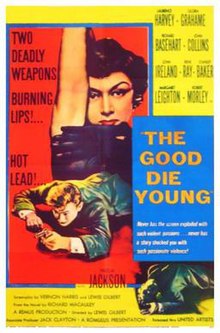
Room at the Top is a 1959 British drama film based on the 1957 novel of the same name by John Braine. It was adapted by Neil Paterson, directed by Jack Clayton, and produced by John and James Woolf. The film stars Laurence Harvey, Simone Signoret, Heather Sears, Donald Wolfit, Donald Houston, and Hermione Baddeley.
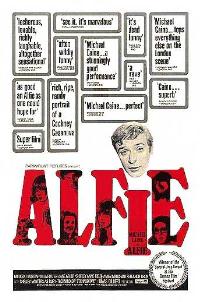
Alfie is a 1966 British comedy-drama film directed by Lewis Gilbert and starring Michael Caine. The Paramount Pictures release was adapted from the 1963 play of the same name by Bill Naughton. Following its premiere at the Plaza Theatre in the West End of London on 24 March 1966, the film became a box office success, enjoying critical acclaim, and influencing British cinema.

Two-Way Stretch, also known as Nothing Barred, is a 1960 British comedy film directed by Robert Day and starring Peter Sellers, Wilfrid Hyde-White, Lionel Jeffries and Bernard Cribbins. The screenplay is by Vivian Cox, John Warren and Len Heath. A group of prisoners plan to break out of jail, commit a robbery, and then break back into their jail again, thus giving them the perfect alibi – that they were behind bars when the robbery occurred. However, their plans are disrupted by the arrival of a strict new Chief Prison Officer.

Laurence Harvey was a Lithuanian-born British actor and film director. He was born to Lithuanian Jewish parents and emigrated to South Africa at an early age, before later settling in the United Kingdom after World War II. In a career that spanned a quarter of a century, Harvey appeared in stage, film and television productions primarily in the United Kingdom and the United States.

Gloria Grahame Hallward was an American actress. She began her acting career in theatre, and in 1944 made her first film for MGM.
Sir John Woolf and his brother James Woolf were British film producers. John and James founded the production companies Romulus Films and Remus Films, which were active during the 1950s and 1960s, and the distribution company Independent Film Distributors, which was active 1950–59 and handled the UK distribution of films such as The African Queen and Gift Horse, as well as several films made by their two production companies.
Naked Alibi is a 1954 American film noir crime film directed by Jerry Hopper and starring Sterling Hayden, Gloria Grahame and Gene Barry. It was released on October 1, 1954 by Universal-International. Portions of the film were shot in Tijuana.
Cast a Dark Shadow is a 1955 British suspense film noir directed by Lewis Gilbert and written by John Cresswell, based on the 1952 play Murder Mistaken by Janet Green. It stars Dirk Bogarde, Margaret Lockwood, Kay Walsh, Kathleen Harrison and Robert Flemyng. The film released on 20 September 1955, distributed by Eros Films Ltd. in the United Kingdom and Distributors Corporation of America in the United States. The story concerns a husband who murders his wife.

Hell Is a City is a 1960 British crime thriller film starring Stanley Baker, based on the 1954 novel of the same title by Maurice Procter.

Life at the Top is a 1965 British drama film, a production of Romulus Films released by Columbia Pictures. The screenplay was by Mordecai Richler, based on the 1962 novel Life at the Top by John Braine, and is a sequel to the film Room at the Top (1959). It was directed by Ted Kotcheff and produced by James Woolf, with William Kirby as associate producer. The music score was by Richard Addinsell and the cinematography by Oswald Morris. The film's art director, Edward Marshall, received a 1966 BAFTA Award nomination.

Train of Events is a 1949 British portmanteau film made by Ealing Studios, directed by Sidney Cole, Charles Crichton and Basil Dearden and starring Jack Warner, Peter Finch and Valerie Hobson. The film premiered on 18 August 1949 at the Gaumont Haymarket in London. In the film, as a train is heading for a crash into a stalled petrol tanker at a level crossing, four different stories are told in flashback.

The Pleasure Girls is a1965 British drama film directed by Gerry O'Hara and starring Francesca Annis, Ian McShane and Klaus Kinski.

Once a Sinner is a 1950 British drama film directed by Lewis Gilbert and starring Pat Kirkwood, Jack Watling and Joy Shelton.
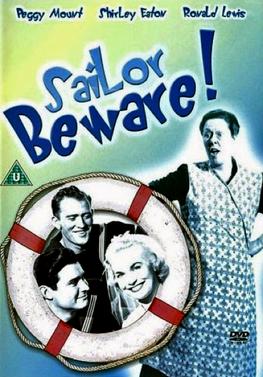
Sailor Beware! is a 1956 British comedy film directed by Gordon Parry and starring Peggy Mount, Shirley Eaton and Ronald Lewis. It was released in the United States by Distributors Corporation of America in 1957 as Panic in the Parlor.

The Terror is a 1938 British crime film directed by Richard Bird and starring Wilfrid Lawson, Linden Travers and Bernard Lee. It was based on the 1927 play The Terror by Edgar Wallace. The play had previously been adapted as the American film The Terror(1928).

A Cry from the Streets is a 1958 British drama film directed by Lewis Gilbert, starring Max Bygraves and Barbara Murray.

Saloon Bar is a 1940 British comedy thriller film directed by Walter Forde and starring Gordon Harker, Elizabeth Allan and Mervyn Johns. It was made by Ealing Studios and its style has led to comparisons with the later Ealing Comedies, unlike other wartime Ealing films which are different in tone. It is based on the 1939 play of the same name by Frank Harvey in which Harker had also starred. An amateur detective tries to clear an innocent man of a crime before the date of his execution.

Three Hats for Lisa a.k.a. One Day in London is a 1965 British musical comedy film directed by Sidney Hayers and starring Joe Brown, Sid James, Sophie Hardy, Una Stubbs and Dave Nelson.
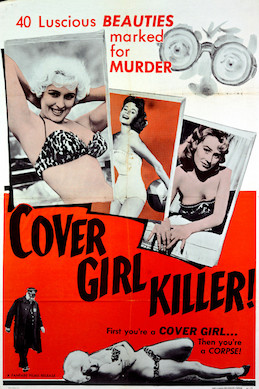
Cover Girl Killer is a 1959 black and white British thriller film directed by Terry Bishop and starring Harry H. Corbett, Felicity Young, Victor Brooks and Spencer Teakle.
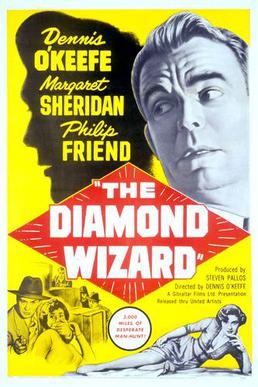
The Diamond is a 1954 British film noir crime film directed by Montgomery Tully/Dennis O'Keefe and starring Dennis O'Keefe, Margaret Sheridan and Philip Friend. It is based on the 1952 novel Rich Is the Treasure by Maurice Procter. It was released by United Artists in Britain and in America, where it was known as The Diamond Wizard.
